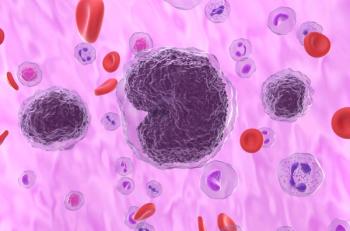
Comprehensive Analysis of SMA May Improve Detection, Lower Residual Risk Ratio
The researchers of this new study wrote that although SMA carrier screening is recommended for all couples, current testing methods primarily focus on copy number loss of SMN1, which can result in false-negative test results due to intragenic mutations and silent carriers falling under the radar.
Researchers have created an approach to screening for
The approach, dubbed comprehensive analysis of SMA (CASMA), was able to provide full sequence coverage of SMN1 and SMN2 genes, leading to an ability to raise detection rates of SMA from 91% to 98% while reducing the residual risk ratio from 1:415 to 1:1868 after negative carrier screening results. According to the researchers, the turnaround time of the approach would be 8 to 10 days and would cost approximately $50 per sample.
The researchers emphasized the importance of their findings, writing that although SMA carrier screening is recommended for all couples, current testing methods primarily focus on copy number loss of SMN1, which can result in false-negative test results due to intragenic mutations and silent carriers falling under the radar. They note that a prospective large study is needed to confirm the clinical use of the approach.
“All reported methods to date use the c.840 site in SMN genes as a surrogate of full genes to calculate the copy number,”
Combining long-range (LR) polymerase chain reaction (PCR) and long-read sequencing, the third-generation sequencing-based approach was tested among 337 samples from 224 families. There were 212 noncarriers, 108 carriers, and 17 patients with SMA.
Results from the approach were compared against multiplex ligation–dependent probe
amplification, next-generation sequencing, and qualitative PCR results, which revealed that CASMA had a sensitivity rate of 100% with a specificity rate of 99.1% for SMN1. There was a 100% sensitivity rate with 98.2% specificity for SMN2. Among 30 samples of representative copy numbers, the researchers were able to confirm the reproducibility of CASMA.
Among the samples, CASMA confirmed 3 mutations in the SMN1 gene, including previously reported frameshift mutation c.551dup in exon 4 and newly reported nonsense mutation c.79C>T in exon 1 and frameshift mutation c.510_c.513del in exon 4.
“SMN1 allele–specific LR nested PCR identified an inframe mutation c.661_666del in SMN1 gene; however, CASMA found that the mutation was located in the SMN2 gene,” described the researchers. “The mutation was also confirmed by SMN2 allele—specific LR nested PCR plus Sanger sequencing. Of note, one variant (c.39C>A) was identified precisely in 1 of 3 SMN1 copies in one individual whose spouse was a 1-copy SMN1 carrier.”
The researchers also assessed CASMA’s ability to detect signature variants associated with duplication alleles. They found that the approach accurately predicted 8 of 16 (50%) samples with SMN1 duplication alleles compared with 5 of 101 (5%) in the deletion group and 15 of 202 (7.4%) in the normal group.
Reference
Li S, Han X, Xu Y, et al. Comprehensive analysis of spinal muscular atrophy: SMN1 copy number, intragenic mutation, and 2 + 0 carrier analysis by third-generation sequencing. J Mol Diagn. Published online May 31, 2022. doi:10.1016/j.jmoldx.2022.05.001
Newsletter
Stay ahead of policy, cost, and value—subscribe to AJMC for expert insights at the intersection of clinical care and health economics.













































